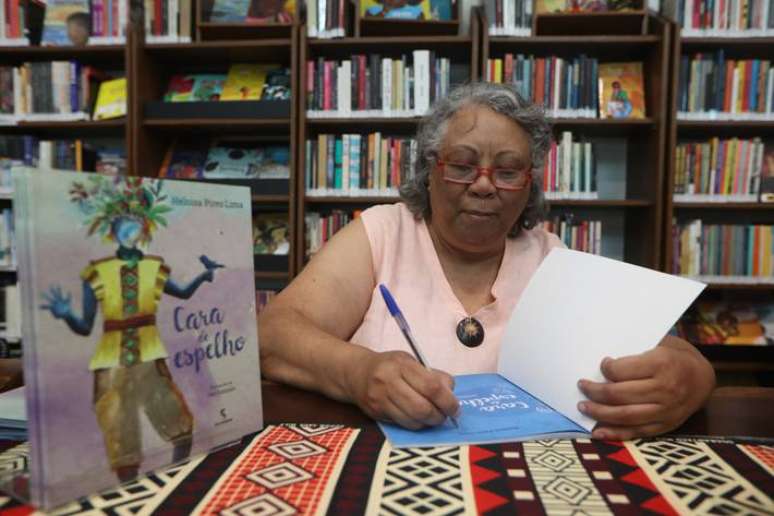Pioneer in the recovery of African cultural heritage in the country’s children’s literature, writer and anthropologist defends greater black representation in the publishing market
The act of telling a story to the little ones is, first of all, the desire to interact, to reach an involvement with someone so (in my case) distant in age. As moments of artistic experience, stories are small pleasures, but also small warnings. The playful narrative wants to talk about life. The big bad wolf is a sign that there is evil in the world. Ananse, the storyteller spider created by the Akan society of West Africa, is wise in developing plots for human perception. And there is no song or era that has not created authentic expressions for this.
When the transition from orality to writing occurs, adaptations emerge mixed with the talent dedicated to the craft. But this fabulous corner that colors the imagination is organized by the local community and can expand as much as it makes sense.
It is worth noting, then, that a plot, apparently naive for the first readings, is a source of frank elements regarding the models of humanity behind the characters, the construction of the environment, the nuance of the style with never neutral approaches. It is enough to cross, for example, the perspective of the imagination to its continental origins. Although I can carry many of them in my DNA, in addition to the biological one, the cultural one brings to the associations linked to them, historically, no equals in qualifications or disqualifications.
Simply put, Asian, European, African, Amerindian, very cold or oceanic continental drift, for me, does not have the same value. The occasional African or European is arranged hierarchically in the composition I imagine of myself. Therefore, the case of generations and children’s collections, when crossed with the dynamics of Brazilian racism, reflects delays and progress to make the cultural representations embedded there less alienating. They will go hand in hand with the children.
After all, those who advertise a work do not do so in a vacuum. From a generational point of view, it is worth noting the worker who writes in this way, illustrates, creates graphic projects, translates, edits, designs bookshops, produces opinion articles, researches production, defends books and readings, proposes curations and other actions in the whole chain in approximately current printed or virtual formats. However, without ever losing sight of the fact that editorial racism is useful for maintaining inequalities as the opaque side of the mirror.
I, author of Stories of Preta (1998, Cia das Letrinhas) I have witnessed this dynamic before, in the “long run”. I say that I have always risked being at the negotiating table and not outside. On the one hand, leading to the collective critical demand for representation and, on the other, to the editorial parameters that began to perceive it.
As a clash between public topics, Preta is the representation of a feminine that occupies the center of the cover. Organized into short stories, the inspiration is the guiding question: What is the difference between being a black girl and all the others who aren’t? In Preta’s journey in search of answers, the narrative leads to new and endless questions collected, playfully, from our daily lives.
Twenty-five years later, the book has another edition, which means that the issues contained therein still apply to Brazilian society. The publication prior to law 10639 is one of the links coming from the expanded black presence inside and behind the scenes in the children and youth sector. And it’s no coincidence that I’m throwing together Mirror face (2023, Salamander). The partnership with the young Bahian illustrator Ani Ganzala is a mythical alliance between the ancestor and Afrofuturism.
The story is about the birth of a baby whose skin was so smooth and luminous that it glowed as if it had just been polished. He shone like a mirror. And if someone were to open their eyes wide and try to see the face that comes into the world, they would only find the image itself reflected there. The narrative could simply summarize the ideas of this article. There is a certain opacity in the publishing industry in search of crystal-clear transparency. The collections, for children and teenagers, offer an image. And she is the mirror image of who organizes the set. And let the black and playful human density prevail.
* Heloisa Pires Lima has a PhD in Social Anthropology. Since 1995 you have been working in the publishing circuit as a writer, editor and researcher in the sector. She is a consultant at Casa Sueli Carneiro where she is the curator of Rodas Literárias. You recently held courses related to the editorial area at A Casa Tombada where you are guest professor for the postgraduate course O Livro para a Infância. You are the jury for the 2022 Jabuti award.
Source: Terra
Rose James is a Gossipify movie and series reviewer known for her in-depth analysis and unique perspective on the latest releases. With a background in film studies, she provides engaging and informative reviews, and keeps readers up to date with industry trends and emerging talents.







